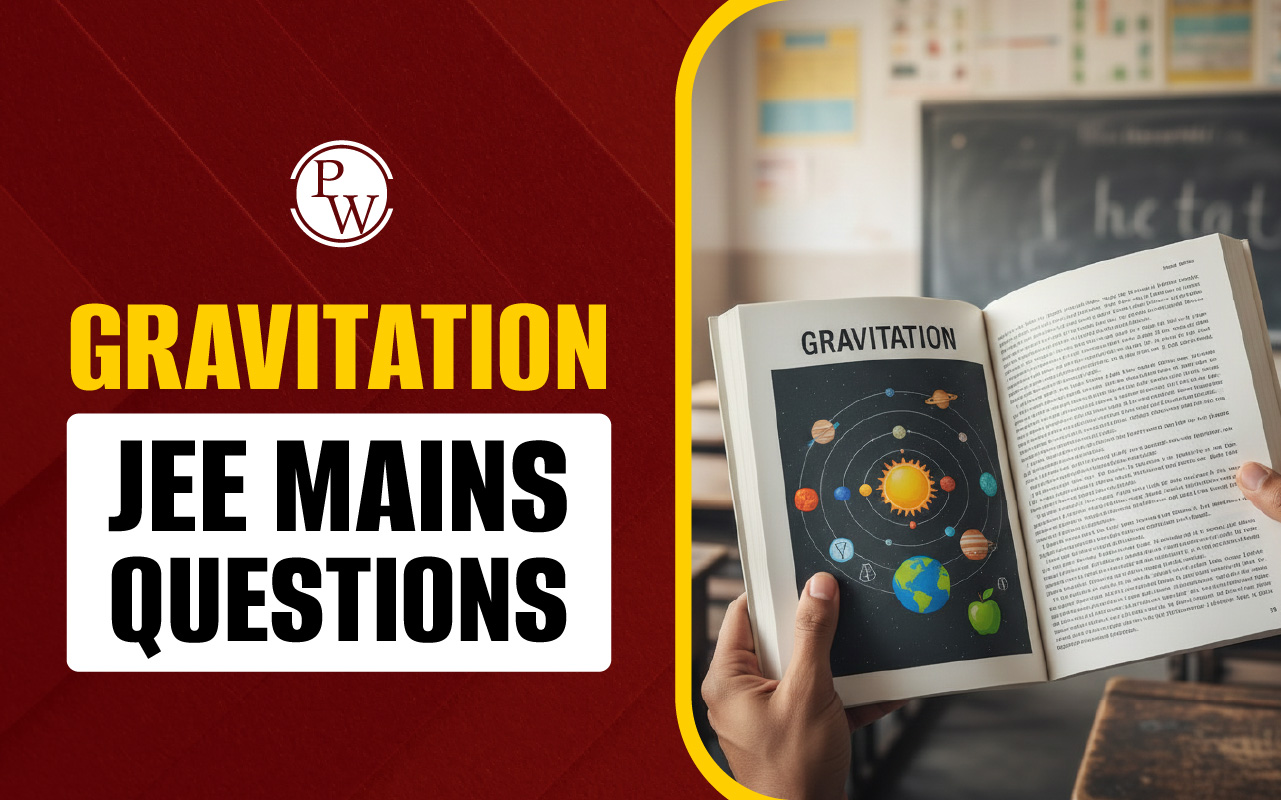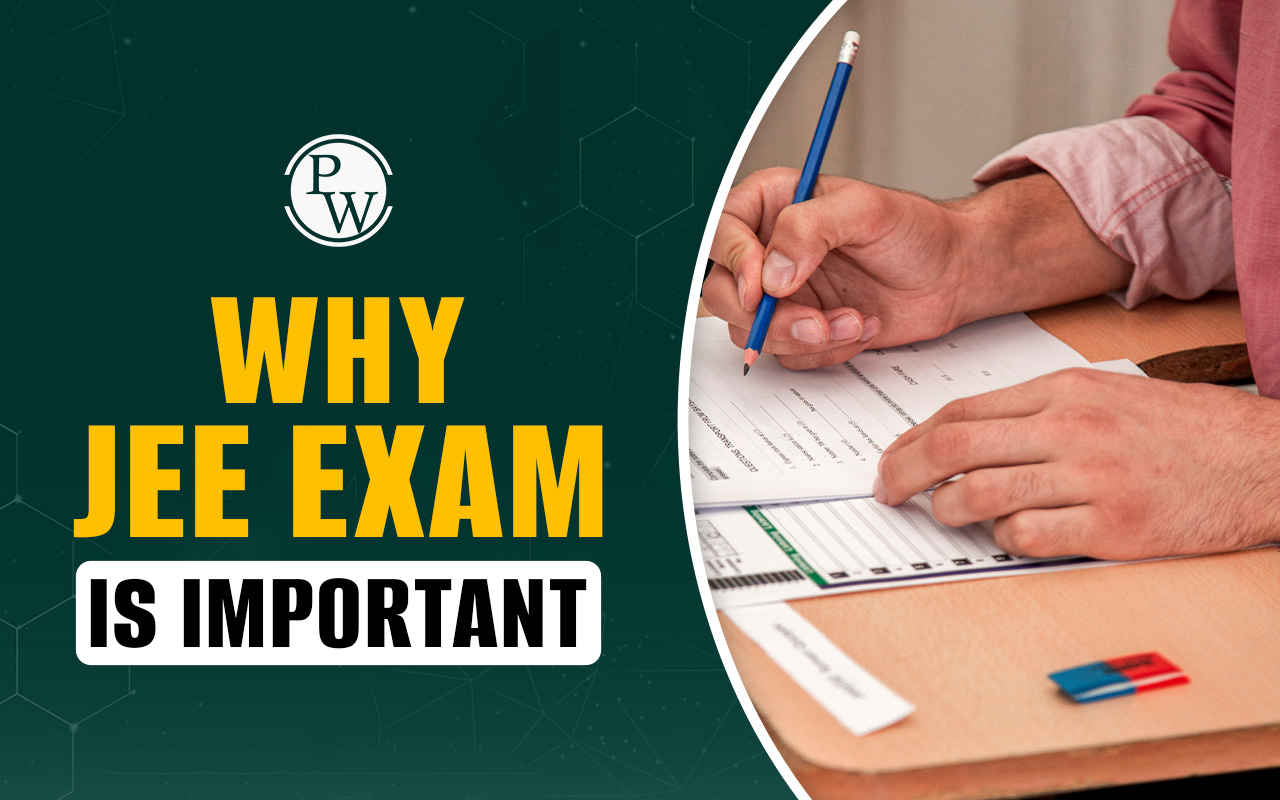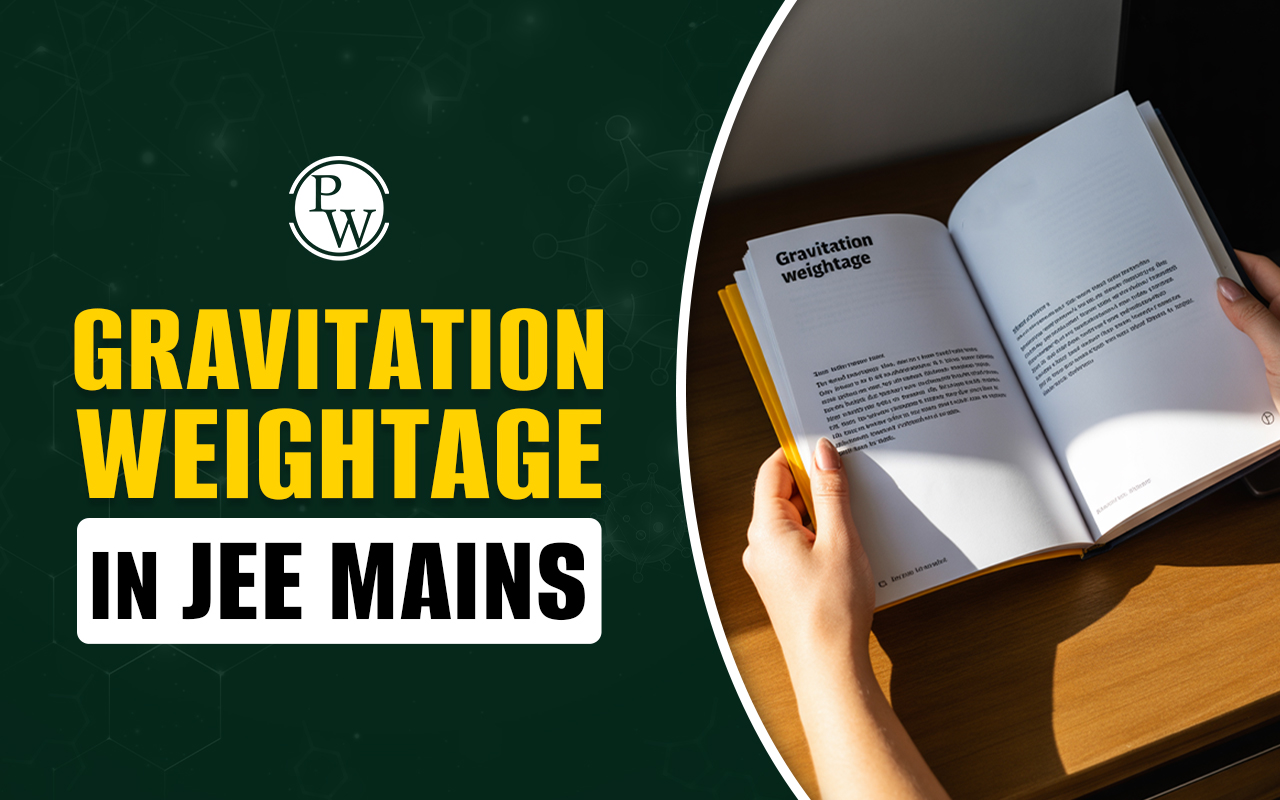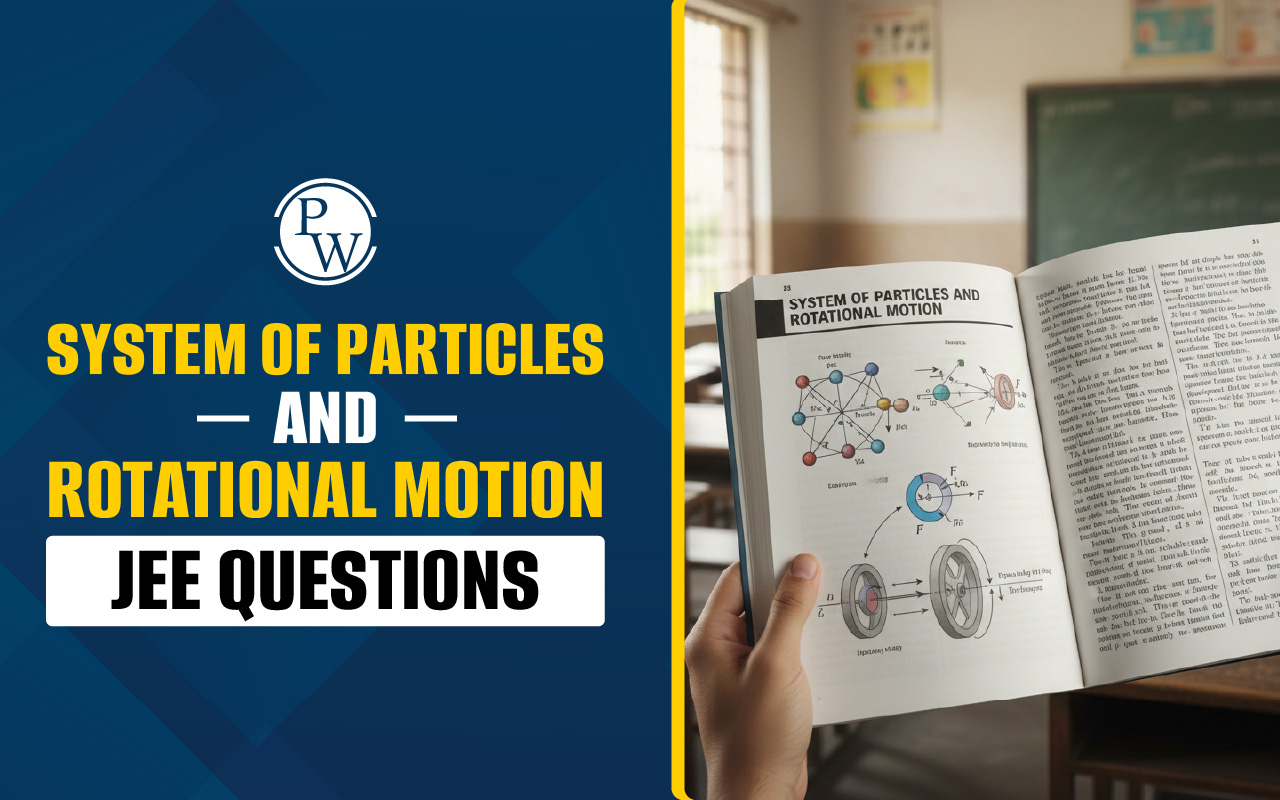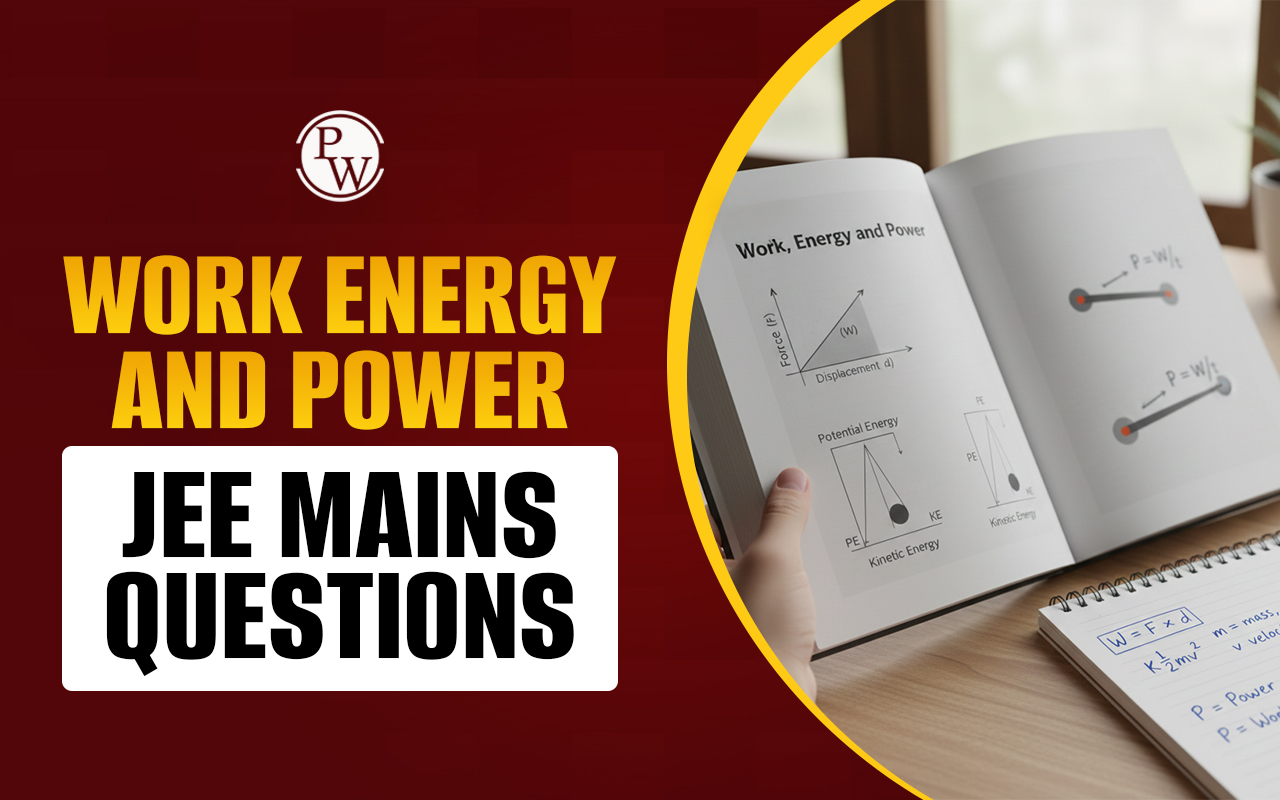
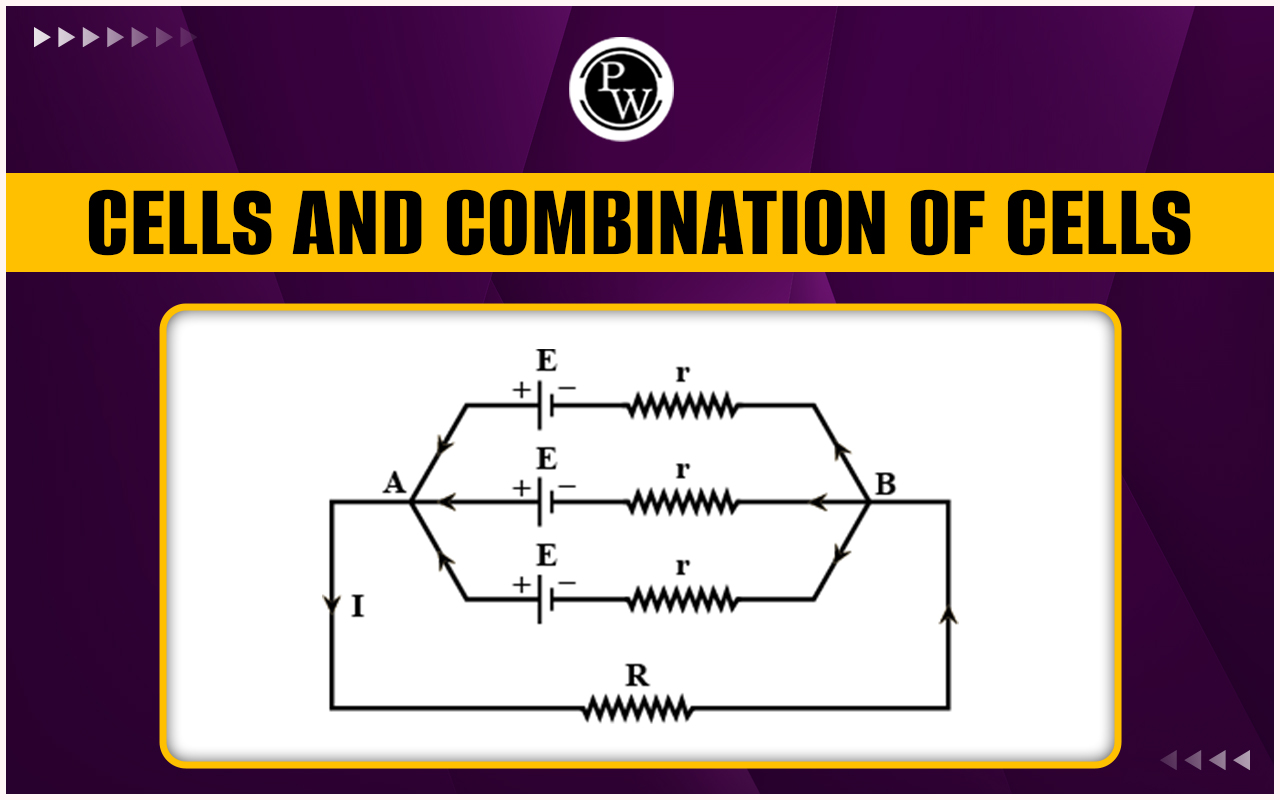
Cell And Combination Of Cells In Physics : An electric cell or a battery is a device that converts chemical energy to electrical energy. It has two terminals made up of metals (positive and negative). In this article, we will discuss electric cells in detail and different combinations of cells.
Cells In Physics
Cell is an electrical device that convert chemical energy to electrical energy. There are two types of cells.
(a) Primary Cell: The cells which cannot be recharged and discarded after use. Eg.: Dry cell, Voltaic cells.
(b) Secondary Cell: The cells which can be recharged when the charge gets over. Here, electrical energy is first converted into chemical energy and then the stored chemical energy is converted into electrical energy. Eg.: Lithium in battery, Nickel-cadmium.
Electromotive Force (Emf) Of The Cell
Electromotive Force (Emf) Of The Cell : The potential difference across the terminals of a cell when it is not giving any current is called emf(E) of the cell. It is the energy supplied by the cell to drive unit charge around the circuit.
EMF depends on:
(a) Metal of electrodes
(b) Nature of electrolyte
(c) Temperature
EMF doesnot depend on:
(a) area of plate
(b) quantity of electrolyte
(c) distance between electrodes.
(d) size of the cell.
Internal Resistance Of A Cells
Internal Resistance Of A Cells : The resistance offered by the electrolyte of the cell when electric current flows through it is known as internal resistance of a cell(r). If depends on
(a)
Concentration of electrolyte
(b)
Area dipped in electrolyte
(c)
Distance between the electrodes
(d)
Temperature
The internal resistance of an ideal cell is zero
Terminal Voltage (V)
Terminal Voltage (V) : The potential difference between the two electrodes when current is being drawn from the cell is called terminal voltage ( V ). When cell is discharging, current inside the cell is from cathode to anode.
(i.e.,
E
>
V
)
When cell is charging, current inside the cell in from anode to cathode.
When the cell in an open circuit, R = ∞
When cell is short circulated, R = 0
If the external resistance ( R ) is equal to the internal resistance ( r ) then the source delivers maximum power and the terminal voltage across the cell
Combination Of Cells
(i) Series Combination
When two cell of EMFs E 1 and E 2 are connected in series, the equivalent EMF will be
and
If there are n cells connected in series,
Among two cells, if one cell is in reverse connection (
E
1
>
E
2
) then
and
(ii) Parallel Combination
When two cells of EMFs E 1 and E 2 are connected in parallel, the equivalent EMF will be
and
and
(iii) Mixed Grouping
If ‘ n ’ identical cells are connected in a row and such ‘ m ’ rows are connected in parallel as then
Condition for maximum power,
Also,
Example 1: A storage battery has e.m.f. 15 volts and internal resistance 0.05 ohm. Its terminal voltage when it is delivering 10 ampere is _____.
A. 30 volts B. 1.00 volts
C. 14.5 volts D. 15.5 volts
Sol.
V
.
Example 2: A battery having e.m.f. 5 V and internal resistance 0.5 Ω is connected with a resistance of 4.5 Ω then the voltage at the terminals of battery is _______.
Sol.
Volt
Combination Of Cells In Physics FAQs
Q.1 : What is electromotive force?
Q.2 : What does the emf of a cell depend on?
Q.3 : What is terminal voltage?

